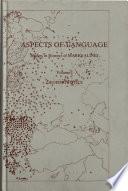
Trouver votre ebook...

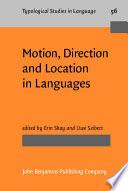
Motion, Direction and Location in Languages
Auteure: Erin Shay , Uwe Seibert
Nombre de pages: 320This book contributes to an area of study that is of interest to linguists of all backgrounds. Typological in nature this volume presents data analysis from the major language families of Africa as well as Sino-Tibetan, Austronesian, Japanese, Indo-European, Siouan and Penutian. The 16 contributors to the volume share a commitment to examining the language phenomena pertaining to the volume s theme with a fresh eye. While most of the papers make reference to existing theoretical frameworks, each also makes a novel and sometimes surprising contribution to the body of knowledge and theory concerning motional, directional and locational predicates, complements, morphology, adpositions and other phenomena. This collection of articles suitably complements courses on comparative and diachronic linguistics, semantics, syntax, typology, or field methods.
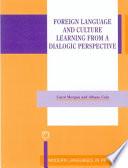
Foreign Language and Culture Learning from a Dialogic Perspective
Auteure: Carol Morgan , Albane Cain
Nombre de pages: 172This book analyses an intercultural project undertaken by French and English 14-year-olds based on an exchange of materials created by the pupils and focused on the topic of law and order. The project was based on a view of learning as a dialogic process interacting with others. A first language and home culture is acquired through such interaction. This project sought to realise this dialogic process in a more meaningful way than is often the case in foreign language classrooms.

Minutes of Proceedings and Evidence of the Standing Joint Committee of the Senate and of the House of Commons on Official Languages
Auteure: Canada. Parliament. Standing Joint Committee On Official Languages
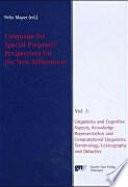
Language for Special Purposes
Auteure: Felix Mayer
Nombre de pages: 474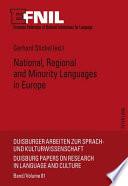
National, Regional and Minority Languages in Europe
Auteure: European Federation Of National Institutions For Language. Conference , Gerhard Stickel
Nombre de pages: 204The European linguistic diversity goes far beyond the official national languages of the present 27 member states of the European Union. In every country several languages of smaller or larger groups of speakers are used besides the official language or the languages of the majority population. These languages are autochthonous languages that have been used for a long time in the individual country as well as allochthonous languages of different groups of migrants and their descendants. The sometimes complicated relations between national, regional and minority languages within various countries are discussed in this volume. Besides reports on several countries, the general sociolinguistic and legal conditions are dealt with in overview contributions. In addition, the Dublin Declaration on the relationship between official languages and regional and minority languages in Europe is presented in 24 languages.
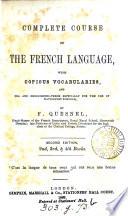
Complete course of the French language
Auteure: François Quesnel
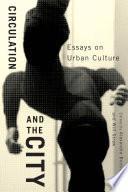
Circulation and the City
Auteure: Will Straw , Alexandra Boutros
Nombre de pages: 314How does movement affect the metropolis?

A New Method of Learning the French Language
Auteure: Louis Fasquelle
Nombre de pages: 482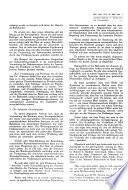
Review of documentation
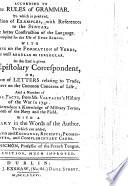
An English exercise-book, for the construction of the French language ... At the end is given The epistolary correspondent, or, A collection of letters relating to trade ... A new edition, much improved
Auteure: J. Daubichon
Nombre de pages: 324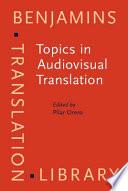
Topics in Audiovisual Translation
Auteure: Pilar Orero
Nombre de pages: 250The late twentieth-century transition from a paper-oriented to a media-oriented society has triggered the emergence of Audiovisual Translation as the most dynamic and fastest developing trend within Translation Studies. The growing interest in this area is a clear indication that this discipline is going to set the agenda for the theory, research, training and practice of translation in the twenty-first century. Even so, this remains a largely underdeveloped field and much needs to be done to put Screen Translation, Multimedia Translation or the wider implications of Audiovisual Translation on a par with other fields within Translation Studies. In this light, this collection of essays reflects not only the state of the art in the research and teaching of Audiovisual Translation, but also the professionals' experiences. The different contributions cover issues ranging from reflections on professional activities, to theory, the impact of ideology on Audiovisual Translation, and the practices of teaching and researching this new and challenging discipline.In expanding further the ground covered by the John Benjamins' book (Multi)Media Translation (2001), this book seeks to...
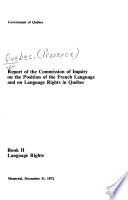
Language rights
Auteure: Québec (province) Commission D'enquête Sur La Situation De La Langue Francause Et Sur Les Droits Lingquistiques Au Quebec
Nombre de pages: 512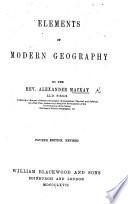
Nouvel abrégé de géographie moderne ... Septième edition ... augmentée par l'abbé L. O. Gauthier, etc
Auteure: Abbé J. Holmes

Les 5 langages pour trouver l'amour
Auteure: Gary Chapman
Nombre de pages: 286Vous sentez-vous frustré ne pas parvenir à vous épanouir dans vos relations ? Selon Gary Chapman, nous devons nous sentir aimé(e) pour être heureux. Mais nous avons chacun(e) notre personnalité et nous n'exprimons pas notre amour de la même manière. Si vous voulez donner ou recevoir efficacement, vous devez apprendre à parler le juste langage. Chapman identifie cinq moyens d'expression principaux par lesquels chaque individu peut manifester son amour et nous apprend à les utiliser : les paroles valorisantes, les moments de qualité, les cadeaux, les services rendus, le contact physique. Alors, parlez-vous le même langage que vos proches ? Découvrez : L'ingrédient qui manquait dans vos relations passées : pourquoi ont-elles échoué et comment ne plus reproduire les mêmes erreurs ? Comment partager son amour peut transformer toutes vos relations. Comment déclencher enfin la bonne relation en étant à l'écoute sincère de vos besoins et de ceux de la personne rencontrée. Inclus : le test pour déterminer votre profil.
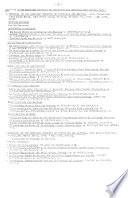
Cartinform
Nombre de pages: 552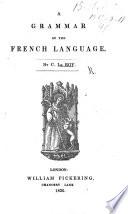
A Grammar of the French Language
Auteure: Charles Le Roy (professor Of French.)
Nombre de pages: 90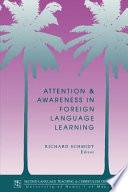
Attention and Awareness in Foreign Language Learning
Auteure: Richard Schmidt , Richard W. Schmidt
Nombre de pages: 413Presents research into the learning of Spanish, Japanese, Finnish, Hawaiian, and English as a second language, with additional comments and examples from French, German, and miniature artificial languages.
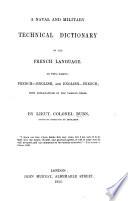
A Naval and Military Technical Dictionary of the French Language; with explanations of the various terms in English
Auteure: Robert Burn (colonel, R.a.)
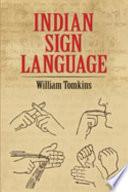
Indian Sign Language
Auteure: William Tomkins
Nombre de pages: 130Indian hand gestures are listed alphabetically by English equivalent, with sample sentence structure as well as information on ideographs and pictograph stories
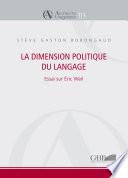
La dimension politique du langage
Auteure: Bobongaud Stève Gaston
Nombre de pages: 482Les investigations épistémologiques présentées ici correspondent à un ensemble de propositions buissonnières autour du langage dans la pensée d’Éric Weil. En scrutant la production théorique weilienne,il s’est agi d’envisager le fait du langage dans la mesure où il rapproche et différencie l’homme de l’animal et participe à la structuration existentielle de l’être humain en face de la violence, qui apparaît comme l’autre de la raison. En d’autres mots, la recherche montre que, chez Éric Weil, le plan du langage représente le milieu qui facilite la spécification anthropologique et la configurationraisonnable de l’être-homme dans le monde. Comme tel, il équivaut au sol d’émergence et d’historicisation de l’être humain. Le langage contribue à l’auto-constitution authentique de l’homme et à son inscription durable dans le monde. Il aide les hommes à s’orienter dans le temps ainsi qu’à organiser leur histoire. Il permet aussi au philosophe de surgir au plan mondain puis le conduit à se manifester comme homo theoreticus dans et au-delà de la spatialité et de la temporalité. L’originalité du livre se situe proprement dans...
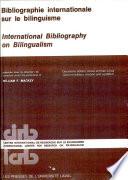
Bibliographie internationale sur le bilinguisme
Auteure: William Francis Mackey , Université Laval. Centre International De Recherches Sur Le Bilinguisme
Nombre de pages: 575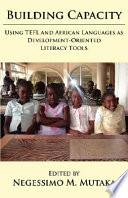
Building Capacity: Using TEFL and African Languages as Development-oriented Literacy Tools
Auteure: Ngessimo M. Mutaka
Nombre de pages: 193"Building Capacity promotes the vision that the teaching of African languages can best achieve its aim of boosting the economic and cultural development of the Africans if they are made to work in synergy with a revamping of the course contents of international languages that will be taught within the frame of a development-oriented literacy curriculum. Great emphasis is put on the oral skills in the use of African languages as they are to serve as a link between the community and the school for the ultimate revitalization of the positive aspects of African cultures in a world beset by globalization. The book is supplemented with a sample of texts in the appendix that are meant to be a bridge between formal texts taught in classrooms and literacy texts that can raise the genuine interests of the local populations in that they address their immediate needs. Among the possible topics language teachers are encouraged to explore in their classes are those concerning economic development, but also such issues as health, education, the environment, food security, and conflict resolution. ""In the face of the growing interest in the use of African Languages by Africans as symbols of...
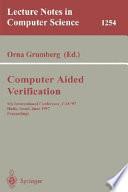
Computer Aided Verification
Auteure: Orna Grumberg
Nombre de pages: 504This book constitutes the strictly refereed proceedings of the 9th International Conference on Computer Aided Verification, CAV '97, held in Haifa, Israel, in June 1997. The volume presents 34 revised full papers selected from a total of 84 submissions. Also included are 7 invited contributions as well as 12 tool descriptions. The volume is dedicated to the theory and practice of computer aided formal methods for software and hardware verification, with an emphasis on verification tools and algorithms and the techniques needed for their implementation. The book is a unique record documenting the recent progress in the area.
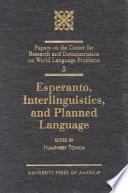
Esperanto, Interlinguistics, and Planned Language
Auteure: Humphrey Tonkin
Nombre de pages: 262A collection of 11 papers, one in German, and an interview in French with Umberto Eco. The topics include the term planned language, Esperanto as a unique model for general linguistics, a dialogue between sociolinguistic sciences and Esperanto culture, the experience of Esperanto in developing a language for international law, and machine translation. No index. Annotation copyrighted by Book News, Inc., Portland, OR.

Language
Plus d'informations